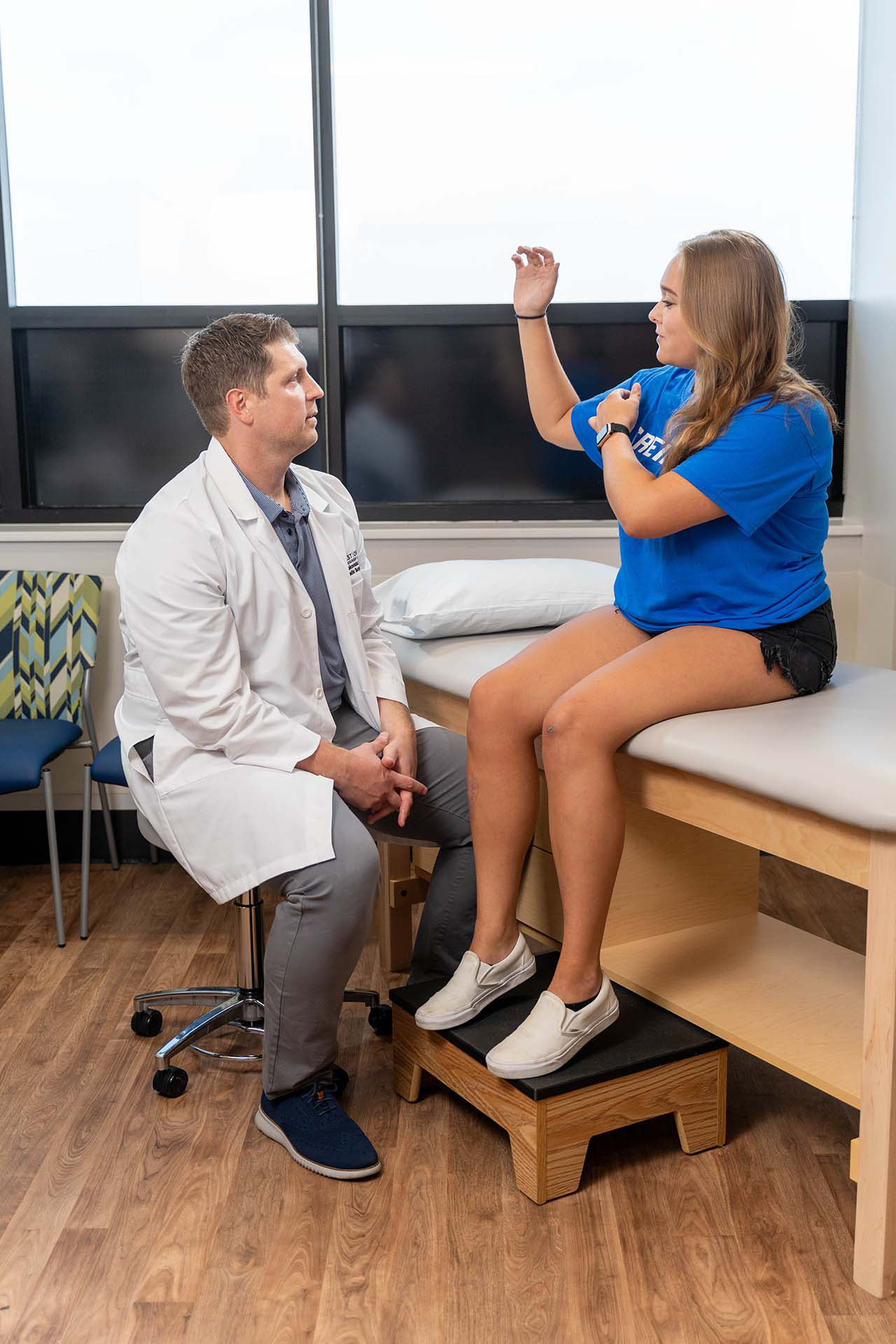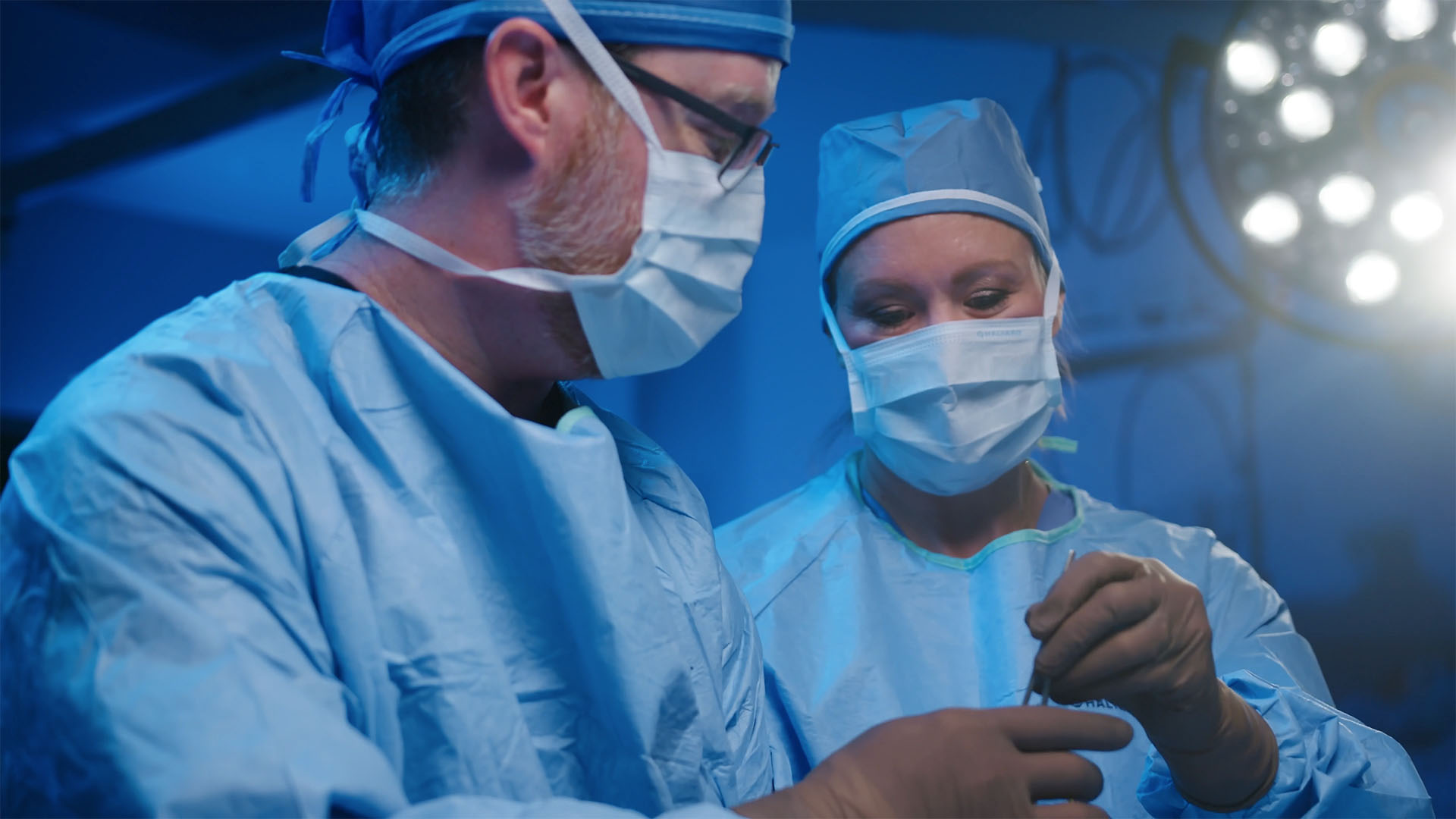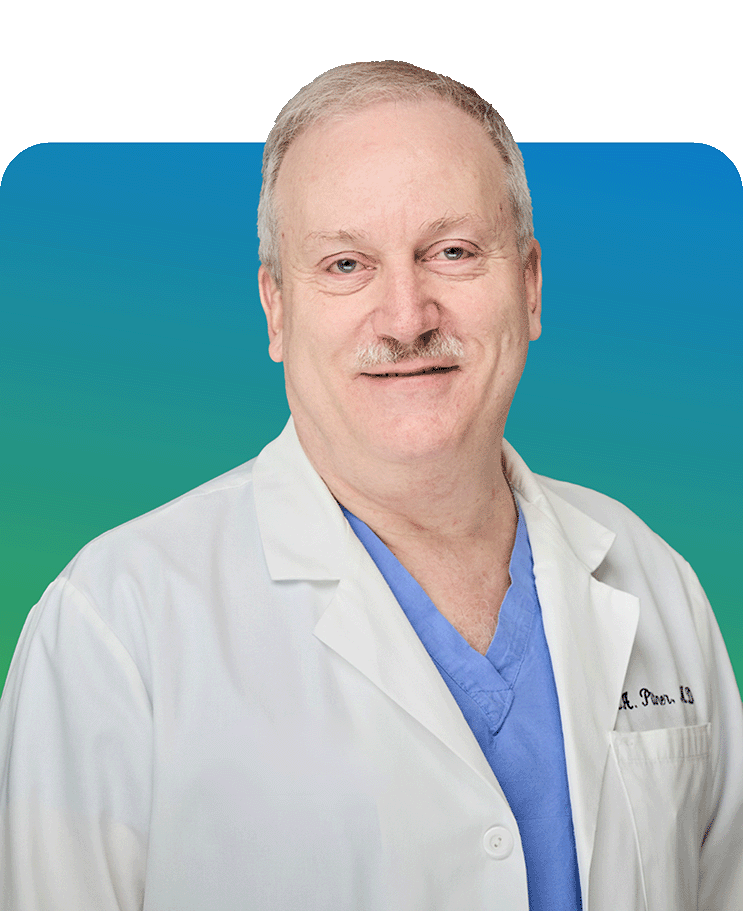Shoulder Replacement Surgery
Shoulder replacement removes damaged areas of bone and replaces them with parts made of metal and plastic (implants). This surgery is also called shoulder arthroplasty (ARTH-row-plas-tee).
The shoulder is a ball-and-socket joint. The round head (ball) of the upper arm bone fits into a shallow socket in the shoulder. Damage to the joint can cause pain, weakness, and stiffness.
Shoulder implants are available in a few different shapes and a range of sizes. Replacement options include partial and total using either anatomic or reverse implants.
Why is my doctor recommending a shoulder replacement?
The Omaha Shoulder & Elbow Orthopedic Specialists at MD West ONE can properly recommend if a shoulder replacement is the best course of action based on your symptoms and situation. This procedure is used to treat a variety of conditions. If you have one of the following conditions, you may want to make an appointment with one of our Board Certified Specialists.
Conditions that can damage the shoulder joint include:
- Fractures: Fractures of the upper end of the humerus may require replacement, either as a result of the injury or when the prior surgery for fracture fixation has failed.
- Osteoarthritis: Known as wear-and-tear arthritis, osteoarthritis damages the cartilage that covers the ends of bones and helps joints move smoothly.
- Osteonecrosis: Some types of shoulder conditions can affect blood flow to the humerus. When a bone is starved of blood, it can collapse.
- Rheumatoid arthritis and other inflammatory disorders: Caused by an overactive immune system, the inflammation associated with rheumatoid arthritis can damage the cartilage and occasionally the underlying bone in the joint.
- Rotator cuff injuries: A rotator cuff is a group of muscles and tendons that surround the shoulder joint. Rotator cuff injuries sometimes can result in damage to cartilage and bone in the shoulder joint.

Treatment
The most common reason for a person to have this surgery is when they have shoulder arthritis pain that can't be controlled with nonsurgical treatments. The pain is usually accompanied by stiffness and a grinding or grating sensation in the shoulder.
These symptoms indicate that bones that form the ball and socket of the shoulder joint are rubbing against one another because the cartilage that should lie between them has worn away.
In addition, some patients who are experiencing early-stage osteoarthritis may wish to first try nonsurgical, conservative management of their condition to determine whether a shoulder replacement is necessary or may be delayed. Such measures include:
- corticosteroid injections
- NSAIDs (nonsteroidal anti-inflammatory drugs)
- physical therapy
However, if these treatments do not help there are certain patients who are not good candidates for shoulder replacement. These include those who:
- experience loss or paralysis of both rotator cuff and deltoid muscles
- have active infections
- have a progressive disease of the nervous system that has affected the joint
- have symptoms that are not significantly disabling
Procedure
Both the ball and the socket are replaced, but the implants are reversed. The ball is attached to the shoulder blade and the socket is attached to the upper arm bone. This option typically is preferred if the rotator cuff is severely damaged.
An incision or cut is made in the front of the arm and shoulder. The surgeon then separates muscles and cuts through the tissue to expose the joint.
The upper arm bone is removed from the socket. The top of the arm bone is cut off and prepared to receive an artificial part. The socket is also prepared. A plate is screwed to the socket and a half-sphere is attached. The metal stem is inserted in the arm bone, and a plastic socket is attached to the top.
The new socket is fitted against the new ball to allow smooth movement. The tissue is sewn together around the joint, and the incision is closed.
In a total shoulder, the arthritic surface of the ball is replaced with a metal ball with a stem that is press fit in the inside of the arm bone (humerus) and the socket is resurfaced with a high-density polyethylene component.
Surgical procedures can vary depending on the patient's needs and the surgeon's preferences but generally, the steps are as follows:
Typically, a patient receives general anesthesia and then the surgeon makes an incision approximately 6 inches long, starting at the top and front of the shoulder and curving along the deltoid muscle. The surgeon then cuts through deeper tissue, including one of the rotator cuff tendons to enter the shoulder joint.
The top of the upper arm bone, called the humeral head, is dislocated from the socket of the scapula, or glenoid.
The surgeon will examine the humeral neck, which is the area just below the rounded head of the humerus. The surgeon uses a tool called an osteotome to remove any bone spurs that may have developed on the humeral neck as the result of arthritis.
The surgeon prepares the humerus bone for the prosthetic humeral stem. The humeral stem is a narrow, tapered metal shaft that fits several inches down inside the humerus. The top of this stem is designed to hold a prosthetic ball that will replace the natural humeral head.
A special tool called a reamer is used to smooth and shape the shoulder socket (glenoid) and prepare it for its prosthesis.
The artificial socket, or glenoid prosthesis, is usually made of polyethelyne and has a smooth, slightly concave design to facilitate movement with the prosthetic humeral head. A new socket is usually backed by either a few short pegs or a flat, straight edge called a keel (which is shaped like the keel of a boat). The pegs or keel fits into the natural bone.
The prosthetics may adhere to the natural bone with bone cement or they may be cementless (sometimes called "press fit") components. The fast-acting bone cement takes only about 10 minutes to set.
After the humeral stem is secured in place, a temporary prosthetic ball is attached to its top. Different sizes of the temporary ball will be used to test the stability of the new joint before the final size is determined.
The artificial humeral head has a shape and size suited to the patient's existing anatomy and is specially designed to move with the artificial socket. The exact model selected is based on the surgeon's pre-surgical planning and observations during surgery.
The surgeon inserts the temporary ball into the new socket and moves the shoulder around, checking to make sure the shoulder joint has ease of motion and does not dislocate.
The surgeon will then dislocate the joint, remove the temporary or trial component, and attach the final ball prosthetic. The surgeon inserts the ball into the new socket, checking again for ease of movement and dislocation.
The muscle and other soft tissues that were cut are repaired and the skin incision is stitched or stapled back together.
Rehabilitation
It generally takes eight weeks or more for patients to recover from a shoulder replacement. However, it may be several months before a patient may do heavy labor or strenuous strength exercises.
The day after surgery
X-rays will be taken to determine whether the implant is properly positioned. After the range of motion and stability of the implant are confirmed, physical therapy will begin that same day. The shoulder will be immobilized by a sling during the early rehabilitation phase to permit the tendons which have been repaired to heal. This sling is removable for showering and for rehabilitation exercises. Mobility improves throughout the period of physical therapy.
Timeline for complete recovery
The usual timelines for complete recovery are as follows:
Six weeks – The patient may use the whole arm, including shoulder, for light activity.
Eight weeks (more in some cases) – The patient may begin unrestricted, active use of the arm and shoulder.
Three months – Most patients are reasonably comfortable, have a range of motion about half of what is normal, and experience some weakness.
Six months – Most patients are pain-free (although they may experience pain during certain weather conditions), and have motion and strength about two-thirds that of a normal level.
One year – Approximately 95% of shoulder replacement patients will be pain-free. The remaining 5% will usually have no more than a weather-related ache or occasional pain due to excessive activity. Likewise, there will probably not be significant strength limitations, depending on the condition of the deltoid and rotator cuff, particularly if both these muscle groups were normal before surgery.
Returning to work
The exact time a person can return to work depends greatly on the motion and strength of the shoulder and how the patient is progressing. Typically:
Two to three weeks – Return to desk work is possible.
Four months or more of recovery is required for heavier, physical labor.
The presurgical condition of the person's shoulder muscles and tendons plays the largest role in the time frame of a patient’s recovery. If the muscles and tendons are in good shape prior to surgery, rehabilitation will be easier.
In all cases, proper and extensive postoperative rehabilitation are key factors in achieving the maximum benefit of shoulder replacement surgery.

Risks and Complications
All surgeries come with the risk of complications. Getting a shoulder replacement can come with a particular set of risks including:
- Blood clots. Clots can form in the veins of the leg or arm after surgery. This can be dangerous because a piece of a clot can break off and travel to the lung, the heart, or, rarely, the brain.
- Dislocation. It's possible for the ball of your new joint to come out of the socket.
- Fracture. The humerus bone, the scapula, or the glenoid bone can break during or after surgery.
- Implant loosening. Shoulder replacement components are durable, but they may loosen or become worn over time. In some cases, you may need another surgery to replace the loose components.
- Infection. Infection can occur at the incision site or in the deeper tissue. Surgery is sometimes needed to treat it.
- Nerve damage. Nerves in the area where the implant is placed can be injured. Nerve damage can cause numbness, weakness and pain.
- Rotator cuff failure. The group of muscles and tendons that surround the shoulder joint (the rotator cuff) occasionally wears out after a partial or total anatomic shoulder replacement.
Don't wait any longer to get relief. Make an appointment to see one of our orthopedic specialists.
Meet MD West ONE's Orthopedic Shoulder Specialists

David C. Buck, MD
Sports Medicine & Total Joint

George Emodi, M.D.
Sports Medicine & Total Joint

Brett W. Fischer, MD
Sports Medicine & Total Joint

Mark Franco, M.D.
Sports Medicine & Total Joint

Daniel L. Gaffney, MD
Hand & Wrist Specialist

Kayvon Izadi, MD
Hand & Wrist Specialist

Darren Keiser, M.D.
Sports Medicine & Total Joint

John "Jack" A. McCarthy, MD
Hand & Wrist Specialist

Mark Pitner, MD
Sports Medicine & Total Joint

Charles E. Rosipal, MD
Shoulder & Elbow Specialist

Jeffrey J. Tiedeman, MD
Hand & Wrist Specialist

Kimberly A. Turman, MD
Sports Medicine
